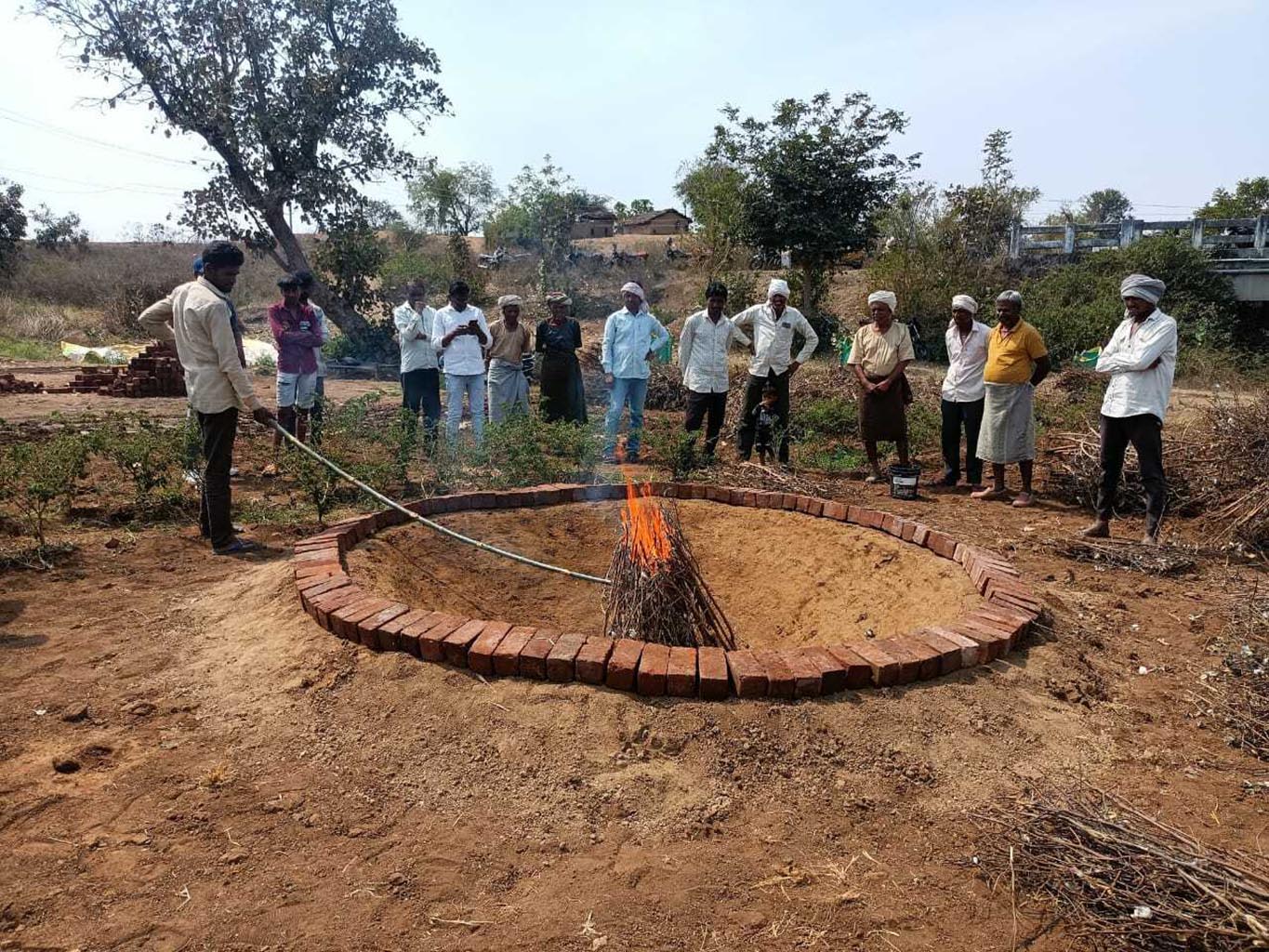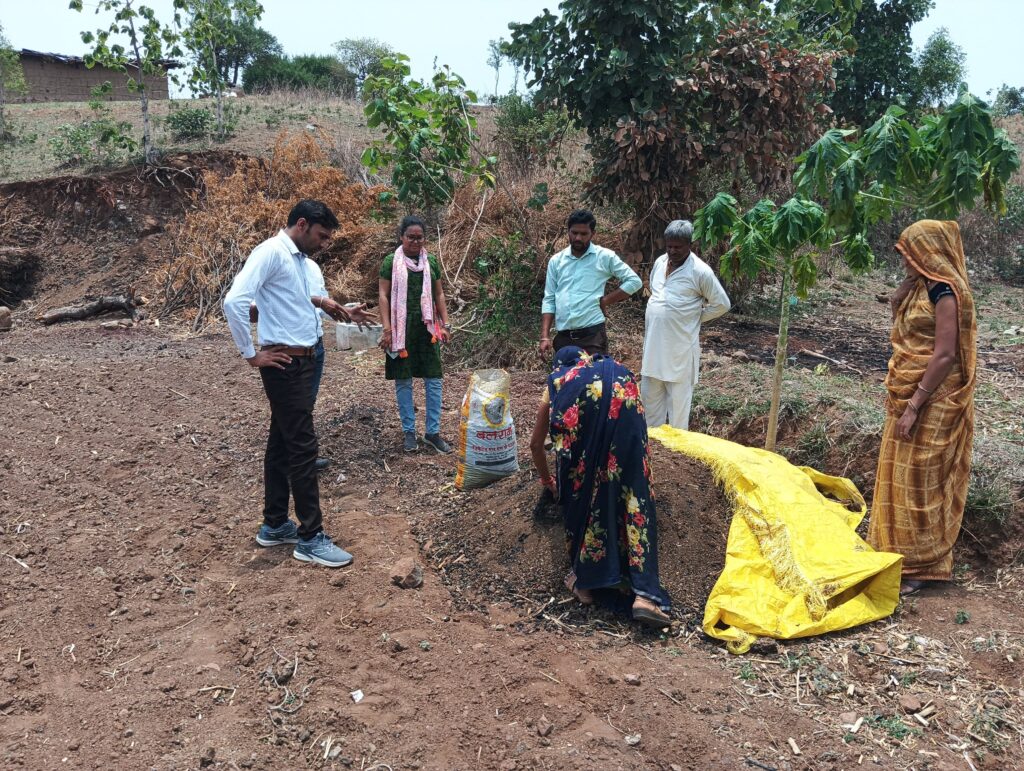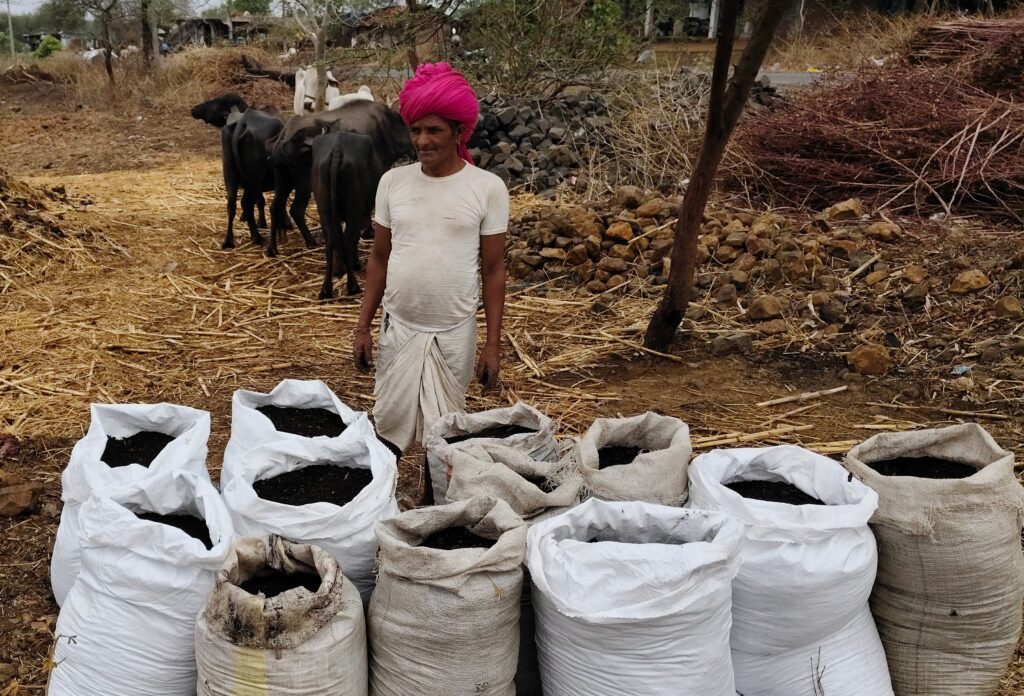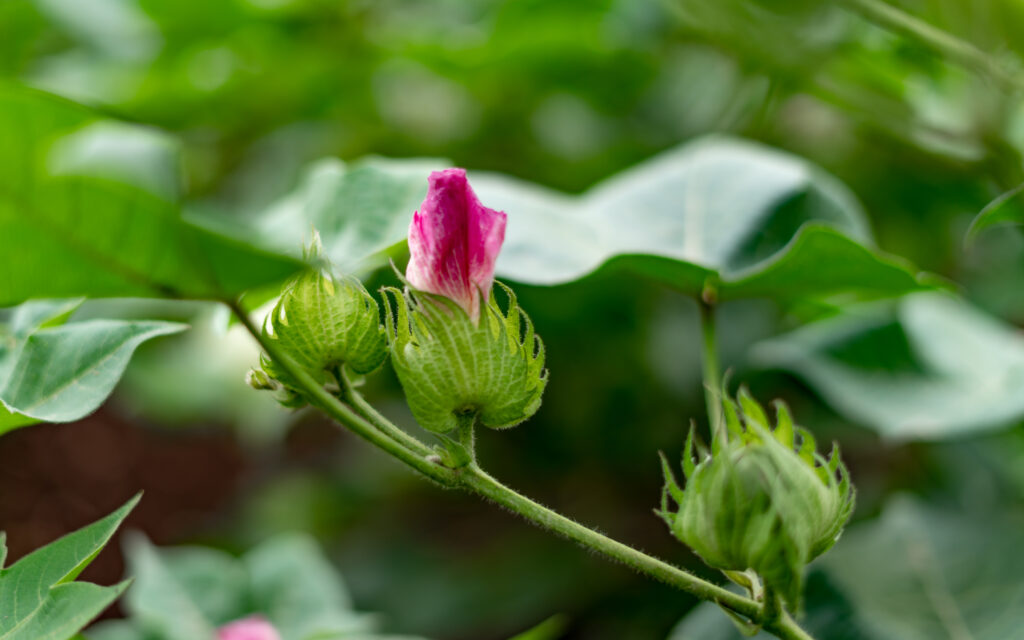Deep in India’s cotton fields, farmers are finding creative ways to fight climate change. By turning cotton stalks into biochar, a material that locks carbon into the soil for centuries, they’re improving soil health and gradually pulling carbon from the air. Together with our partners on the field, the Organic Cotton Accelerator (OCA) helps connect these farmer-led solutions with fashion brands seeking real, measurable climate impact in their own supply chains.
Avinash Karmarkar, Vice President of Vasudha Farm Initiatives, and OCA Implementing Partner who has been at the forefront of biochar projects in India, explains why this innovation matters so much. “There are two ways of looking at carbon projects,” he says. “One is avoidance, which means you implement technology to eliminate further emission. The other is removal which reduces the carbon that has already been emitted into the atmosphere. Biochar is the most efficient way to remove the carbon from the atmosphere and permanently sequester it in the soil for a very long time. It combines carbon removal with strong social and economic co-benefits.”
What is biochar?
Biochar is produced through pyrolysis, a process in which crop residues such as cotton stalks are heated under low-oxygen conditions. Instead of decomposing or being burned (both of which release greenhouse gases), the biomass is transformed into a stable, carbon-rich material that can remain in the soil for centuries.
“When you apply carbon to the soil in the form of biochar, it stays locked in the earth for hundreds of years, offering permanence,” Avinash explains. “Even if you till the soil, the carbon does not escape into the atmosphere. In contrast, carbon from regular organic matter such as compost decomposes quickly and is easily lost after tillage.”
Research suggests that applying biochar over six to eight years can sustain microbial life in the soil and improve its fertility. However, the positive effects tend to plateau beyond a certain threshold, and very high application rates do not yield additional benefits for crop production.
But biochar is not just about capturing and storing, it is also making soil healthier and more productive. He describes how the process works: “When we produce biochar, we make charcoal-like material through pyrolysis. And then we bring it to life by inoculating it with microbial solution. Once you put microbes into biochar, then it becomes a living thing. This allows beneficial microorganisms to colonise the porous structure of the biochar, forming a habitat where they can thrive. The microbes inside multiply in thousands and millions and they help the soil with microbial growth.”
Biochar can also improve the soil’s capacity to absorb and hold moisture, particularly valuable in dry conditions. It also captures nutrients such as nitrogen and releases them slowly, reducing fertiliser needs, improving nutrient efficiency, and mitigating groundwater pollution.
Farmer benefits and yield gains
For farmers, this translates into increased resilience, lower input costs, and higher yields. In trials with 70 cotton farmers, Vasudha saw yields increase by around 30 to 33 per cent. When Vasudha ran trials, the farmers experienced the benefits themselves. In the right contexts yields go up, and they needed less pesticide and fertiliser. This kind of proof is key; when farmers see results on their own fields, they adopt the practice naturally, not because it’s required, but because it works.
Cotton farming generates a lot more than just fibre. For every hectare of cotton that produces about 500 kilograms of fibre, there are more than 4,000 kilograms of stalks left behind. These residues are often burned in the field or left to rot, releasing carbon dioxide and more harmful methane and nitrous oxide into the atmosphere. Thus, through the conversion of biomass into biochar, waste becomes an asset. “From one hectare of cotton, you can make about 1,200 to 1,500 kilograms of biochar depending on pyrolysis conditions,” Avinash explains.
Organic cotton as a potential carbon-removal solution
Cotton can shift from being a source of emissions to a tool for carbon removal.
For fashion brands, this is a big opportunity. Instead of offsetting through unrelated projects, biochar provides the opportunity for in-setting which is to actually decarbonise their own supply chain. “You are not buying carbon credits from somewhere else,” Vasudha’s representative says. “You are generating it from within your supply chain benefitting the very farmers who grow cotton for you, increasing their incomes and improving their livelihood. That is the beauty of this.”
OCA’s role: connecting brands and farmers
“As the global organisation dedicated to organic cotton, OCA is uniquely placed to bring both sides together: the brands who are ready to decarbonise and the farmers who are ready to lead that change,” said Ruud Schute, OCA’s Programme Director. “Through the OCA Farm Programme, brands can invest in farmer training, resources, and practical research that make biochar adoption easier. In return, they gain access to organic cotton that comes with real, verifiable data.”
For farmers, the support from OCA and its field partners provides the know-how and resources to scale biochar production sustainably. Scaling is less about feasibility than about investment. In one project year, the Vasudha team produced 1,000 tonnes of biochar, which removed around 2,000 tonnes of carbon. The potential is vast because the feedstock, or agricultural residues, are abundant. Across India, crop residues are one of the main sources of open field burning, a major contributor to greenhouse gas emissions and poor air quality.
This example from Vasudha Farm Initiatives is just one of several biochar projects underway in OCA’s network. Other OCA field partners are also exploring and scaling similar approaches, helping farmers across regions turn agricultural waste into a climate solution and build more sustainable cotton systems.
How organic cotton can lead on climate action
For OCA, this is a chance to take climate action where it really counts, at the start of the fashion supply chain. Biochar can help turn organic cotton into a fibre that not only avoids harm but actively restores the environment, regenerating soils, improving livelihoods, and removing carbon.
With OCA as the convenor, brands can be part of that future, embedding carbon removal in the very fields where the cotton they source is grown and helping farmers lead the way to lower-carbon, more resilient supply chains. By becoming an OCA Contributor, brands can take part in this transformation. Find out how your organisation can join OCA.
Photo credit: Photographs taken at Aga Khan Rural Support Programme (India) field in Khargone, Madhya Pradesh.









